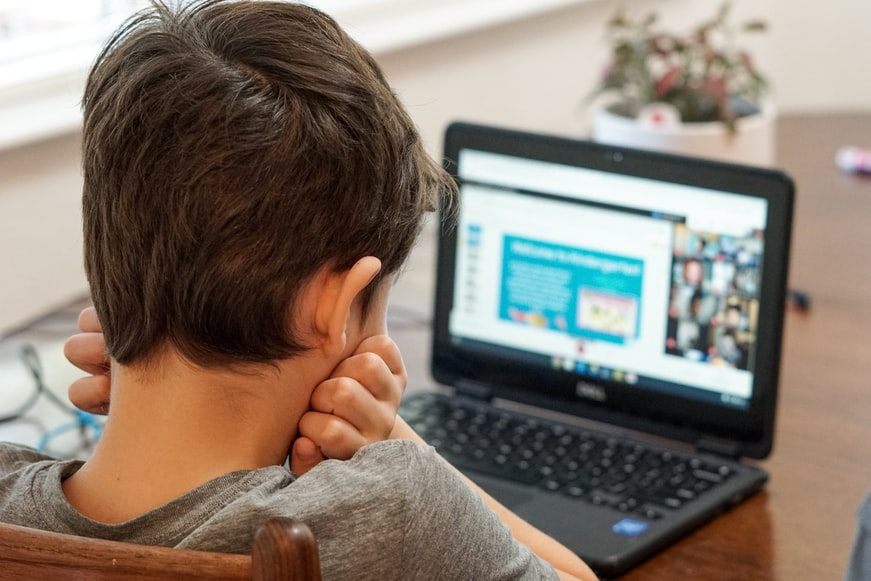Since the start of the pandemic, a lot of changes have been made to the lives of people all around the world in general, but one specific change that has been made that has greatly impacted the lives of the young people in the world today is the changes made to education.
When the first wave of the pandemic hit and lockdown policies were placed on the cities of the world, schools were forced to close their doors and move to an online space. There is a lot to say about virtual learning in general, as this isn’t a new idea that was created during the pandemic, however, we will be sticking to the basic pros and cons of online learning during the pandemic mainly from the students’ perspective.
Contents
1. Safety

The main reason why schools moved online during the height of the pandemic is that COVID-19 was spreading at a dangerously rapid pace. Lockdown policies, curfews, and travel bans were all put in place for this very reason. The dangers of this coronavirus were so serious that truly, the safest place to be was locked down in your home.
Schools had to make this change to move online for the safety of the students, the teachers, and their families. The move to an online platform helped slow the spread of the virus and ultimately, while there were plenty of pitfalls and a learning curve, was the safest thing to do for the wellbeing of everyone within the education system.
2. Comfort
It is no secret that when the change was made to move online, many students were initially happy as they were able to go to school directly from their bedrooms. It is a lot easier to get to class on time when all you have to do is log in. During this time, students didn’t have to wake up hours before their first class to get ready and commute to school, they could wake up three minutes before class and log in if they wanted to.
In addition, you could go to school in your pajamas or anything really if you chose to. There was no need to spend loads of time choosing an outfit, doing your hair, putting on makeup, and so on every single morning. You could very literally roll out of bed (or stay in bed) and turn on your laptop to go to school.
Adding to the comforts of online school, you could grab a snack, drink, or go to the bathroom whenever you wanted without having to ask for your teacher’s permission. Ironically, there were a lot of freedoms that students experienced when it came to school during the lockdown.
3. Affordability
Most students probably didn’t directly experience this, however, it is important to mention as it greatly affected their parents/guardians. By staying at home, the parents no longer had to pay the transportation fees of their commuting children (whether it was gas for the car or bus passes).
In addition to the transportation fees that come along with sending your children to school, moving their education online allows parents to save on other costs such as lunch money, going out with friends after school, snacks or extra pocket money, etc. The children would just eat at home and stay at home so there wouldn’t be any outstanding expenditures necessary.
4. Open-Book Exams
Probably the biggest perk that all students can agree to when it came to online learning is the opportunity to do all of your assignments with the help of your notes and the internet. Most exams, even on a university level, were open-book during online learning as educators knew that most students would look to their notes or the internet for help.
This way, passing classes and getting good grades was a lot easier than having to memorize the materials and write them down in a classroom with a given time limit. The trouble is that now that most schools are readjusted to face-to-face learning, many students have trouble with going back to really studying the materials.
5. Creativity
One major takeaway about the lockdown experience throughout the pandemic is the creativity that came out of it. Being locked down for months at a time without being able to leave the house will get to you. Human beings are social creatures needing to connect with others.
During the first lockdown, people were forced to stay isolated for months on end and the only way we could connect was through social media. People came up with a lot of creative projects and trends to participate in as well as showing off their unique skills and talents to connect with others. This burst of creativity extended to the classroom as well.
Due to all teaching being done online, teachers needed to get creative with the materials as well as the work itself in order to keep the focus of the students. There were a lot more online projects, whether it was using tools such as YouTube and other social media platforms, or creating video projects.
These new mediums of learning aren’t normally teacher-related jobs, making most teachers go through their own learning curve in how to deal with this pandemic. In the end, students were able to interact with an entirely new style of learning rather than just reading, writing, and memorization.
6. Open Communication
The pandemic, and especially lockdown, was a very lonely time for a lot of people. There were a lot of spikes in depression rates and brought a lot of attention to feelings of isolation, loneliness, and depression. The world of psychology changed by moving online as well and there was a lot more open conversation on mental health and the importance of peer relations.
Specifically, schools were also bringing these issues to the forefront and began a focus on self-assessment. Many schools had emails go out and seminars you could take where you could connect with those who are going through feelings of loneliness. School communities became more tight-knit as you would only interact with your class and the same teachers virtually every day, and that would be the only human interaction most people got during the lockdown.
Open communication into how people are doing, feeling, and going through was welcomed and thriving during online learning, creating a healthier environment for both students and teachers.
7. Resilience

The last thing to mention is the incredible resilience both students and teachers went through during this time. Moving the entire school system online basically overnight was not an easy thing to do and go through. A lot of people (shoutout to all seniors who graduated during lockdown) missed out on a lot of fun events that normally come with being in school (graduation, prom, sports, plays, etc.).
There was a lot of hardship; the world was taken over by a violently spreading deadly virus and our entire lives were confined to our homes. This was a moment in time that will make the history books one day and those that went through this only came out stronger on the other side of it.
Read Also:






















